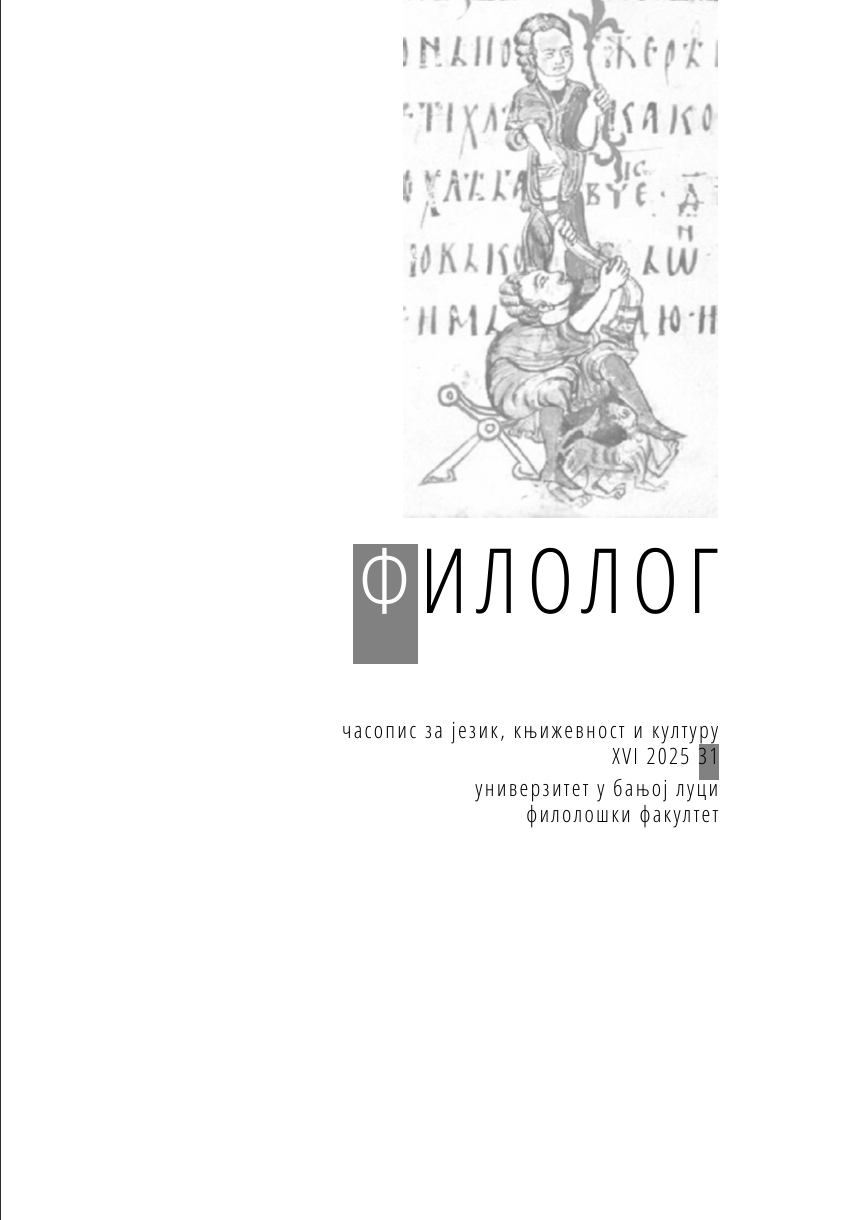МУЛЬТИМОДАЛЬНЫЕ МЕТАФОРЫ И МЕТОНИМИИ В СОВЕТСКИХ АНТИАЛКОГОЛЬНЫХ ПЛАКАТАХ: НА МАТЕРИАЛЕ ВТОРОЙ ПОЛОВИНЫ 20-Х – НАЧАЛА 30-Х ГОДОВ И ЭПОХИ ПЕРЕСТРОЙКИ
DOI:
https://doi.org/10.21618/fil2531209pКлючевые слова:
мультимодальная метафора, мультимодальная метонимия, метафтонимия, советские плакаты, социальная реклама, борьба с пьянствомАннотация
Настоящая статья посвящена анализу мультимодальных метафорических и метонимических перeносов в советских социальных плакатах, призывающих к борьбе с пьянством. Данная работа выполнена в русле когнитивного подхода, при котором метафора и метонимия рассматриваются не как выразительные речевые средства дискурса, а как когнитивные процессы понимания реальности. В последние годы существенно возросло внимание к употреблению и функции мультимодальных метафор и метонимий как в коммерческой, так и в социальной рекламе. Плакаты, которые содержат как вербальные, так и изобразительные компоненты, являются интересным объектом для мультимодального анализа. Исследование проводится на материале агитационных антиалкогольных плакатов, выпущенных в два разных периода советской истории, т.е. во второй половине 20-х – начале 30-х годов и в эпоху перестройки. Основное внимание в статье уделено анализу вида и функции мультимодальных метафор и метонимий, прослеживается также взаимодействие этих двух когнитивных процессов и роли изобразительных и вербальных компонентов плакатов. На основании проанализированного фактического материала были определены изменения в употреблении метафор и метонимий и их взаимодействий, а также изменения роли изобразительных и вербальных компонентов в антиалкогольных плакатах советской эпохи.
Библиографические ссылки
Вашик, К. & Бабурина, Н. И. (2004) Искусство русского плаката. Реальность утопии. Москва, Прогресс-Традиция.
Мартынов, Е. В. (2017) Социальная реклама как направление государственной политики в СССР. Вестник МГЛУ. Общественные науки. 2 (786), 132–143.
Орлов, И. Б. (2004) Глава 7. Новая политика – новое веселие. Аксенов В. Б. (ред.) Веселие Руси. XX век. Градус новейшей российской истории: от «пьяного бюджета» до «сухого закона». Москва, Пробел-2000, 140–175.
Савельева, O. O. & Трубникова, Н. В. (2023) Российская история рекламы: учебник для бакалавров. Москва, Издательско-торговая корпорация «Дашков и Ко».
Шерстнева, Е. В. (2014) Санитарное просвещение и пропаганда в борьбе с пьянством и алкоголизмом в СССР в 1920-е годы. Проблемы социальной гигиены, здравоохранения и истории медицины, 22(4), 54–58.
Barcelona, A. (2009) Motivation of Construction Meaning and Form: The Role of Metonymy and Inference. In Panther, K., Thornburg, L. & Barcelona, A. (eds.), Metonymy and Metaphor in Grammar. Amsterdam, John Benjamins, 363–399. DOI: https://doi.org/10.1075/hcp.25.22bar
Barcelona, A. (2003) Metaphor and Metonymy at the Crossroads: A Cognitive Perspective. Berlin/New York, Mouton de Gruyter. DOI: https://doi.org/10.1515/9783110894677
Bolognesi, M. (2019) Il linguaggio figurato nella comunicazione multimodale. Il genere pubblicitario e la campagna sociale. RICOGNIZIONI, Torino, 6, 11–28. DOI: https://doi.org/10.13135/2384-8987/3510
Bolognesi, M. & Vernillo, P. (2019) How Abstract Concepts Emerge from Metaphorical Images: The Metonymic Way. Language and Communication, 69, 26–41. DOI: https://doi.org/10.1016/j.langcom.2019.05.003
Bonnell, V. E. (1997) Iconography of Power: Soviet Political Posters under Lenin and Stalin. Berkeley, University of California Press.
Buvina, E. (2014) Il fascino e la maledizione dell’alcol nella stampa popolare russa. Quaderni di Palazzo Serra, 25, 59–98.
Buvina, E. & Curletto, M. A. (2015) Il lubok. Un’enciclopedia illustrata della vita popolare russa. Bologna, Emil.
Herrero Ruiz, J. (2006) The Role of Metaphor, Metonymy, and Conceptual Blending in Understanding Advertisements: The Case of Drug-prevention Ads. Revista Alicantina de Estudios Ingleses, 19, 169–190. DOI: https://doi.org/10.14198/raei.2006.19.10
Denroche, C. (2014) Metonymy and Language. A New Theory of Linguistic Processes. New York/London, Routledge. DOI: https://doi.org/10.4324/9781315749396
Dirven, R. & Pörings, R. (2002) Metaphor and Metonymy in Comparison and Contrast. Berlin/New York, Mouton de Gruyter. DOI: https://doi.org/10.1515/9783110219197
Forceville, C. J . (2009) Non-Verbal and Multimodal Metaphor in a Cognitivist Framework: Agendas for Research. In Forceville, C. J. & Urios-Aparisi, E. (eds.), Multimodal Metaphor. Berlin/New York, Mouton de Gruyter, 19–42. DOI: https://doi.org/10.1515/9783110215366
Forceville, C. J. (2008) Metaphors in Pictures and Multimodal Representations. In Gibbs, R. W. JR. (ed.), The Cambridge Handbook of Metaphor and Thought. Cambridge, Cambridge University Press, 462–482. DOI: https://doi.org/10.1017/CBO9780511816802.028
Forceville, C. J. (2007) Multimodal Metaphor in Ten Dutch TV Commercials. The Public Journal of Semiotics, Lund, Sweden, 1(1), 15–34. DOI: https://doi.org/10.37693/pjos.2007.1.8812
Forceville, C. J. (1996) Pictorial metaphor in advertising. London/New York, Routledge.
Forceville, C. J. & Urios-Aparisi, E. (eds.) (2009) Multimodal Metaphor. Berlin/New York, Mouton de Gruyter.
Goossens, L. (1990) Metaphtonymy: The Interaction of Metaphor and Metonymy in Expressions for Linguistic Action. Cognitive Linguistics, 1, 323–340. DOI: https://doi.org/10.1515/cogl.1990.1.3.323
Kövecses, Z. (2010) Metaphor. A practical introduction. Oxford, Oxford University Press.
Lakoff, G. & Johnson, M. (1980) Metaphors we live by. Chicago, University of Chicago Press.
Littlemore, J. (2015) Metonymy. Hidden Shortcuts in Language, Thought and Communication. Cambridge, Cambridge University Press. DOI: https://doi.org/10.1017/CBO9781107338814
Murray, D. & Sorrell S. (2017) Alcohol. Alkogol’. FUEL Publishing.
Pérez Sobrino, P. (2017) Multimodal Metaphor and Metonymy in Advertising. Amsterdam/Philadelphia, John Benjamins Publishing Company. DOI: https://doi.org/10.1075/ftl.2
Pérez Sobrino, P. (2016) Shockvertising: Patterns of Conceptual Interaction Constraining Advertising Creativity. Círculo de Lingüística Aplicada a la Comunicación, 65, 257–290. DOI: https://doi.org/10.5209/rev_CLAC.2016.v65.51988
Pinelli, E. (2002) Multimodal metaphors and metonymies in Soviet anti-alcohol posters: the role of the image of the bottle and (de)personification. Revista de Estudos da Linguagem, 30(1), 85–112.
Radden, G. (2005) The Ubiquity of Metonymy. In Otal Campo J.-L., Ferrando, I. & Belles Fortuno, B. (eds.), Cognitive and Discourse Approaches to Metaphor and Metonymy. Castellón de la Plana, Universitat Jaume I, 11–28.
Radden, G. (2003) How Metonymic are Metaphors?. In Barcelona, A. (ed.), Metaphor and Metonymy at the Crossroads: A Cognitive Perspective. Berlin, Mouton de Gruyter, 93–108. DOI: https://doi.org/10.1515/9783110894677.93
Ruiz De Mendoza Ibáñez, F. J. & Galera Masegosa, A. (2014) Cognitive Modeling. A Linguistic Perspective. Amsterdam/Philadelphia, John Benjamins. DOI: https://doi.org/10.1075/hcp.45
Serrano Losada, M. (2015) Multimodal Metaphorical and Metonymic Renderings of Pain in Advertising: A Case Study. Revista Electrónica de Lingüística Aplicada, 1(14), 35–50.
Urios-Aparisi, E. (2009) Interaction of multimodal metaphor and metonymy in TV commercials: Four case studies. In Forceville C. J. & Urios-Aparisi E. (eds.), Multimodal Metaphor. Berlin/New York, Mouton de Gruyter, 95–117.
Veinberga, E. (2014) Multimodal Metonymic Image of the Bottle in Advertising. Language in Different Contexts. Research papers, 6(1), Part 1, 182–190.
White, S. (1988) The Bolshevik Poster. New Haven, Yale University Press.









